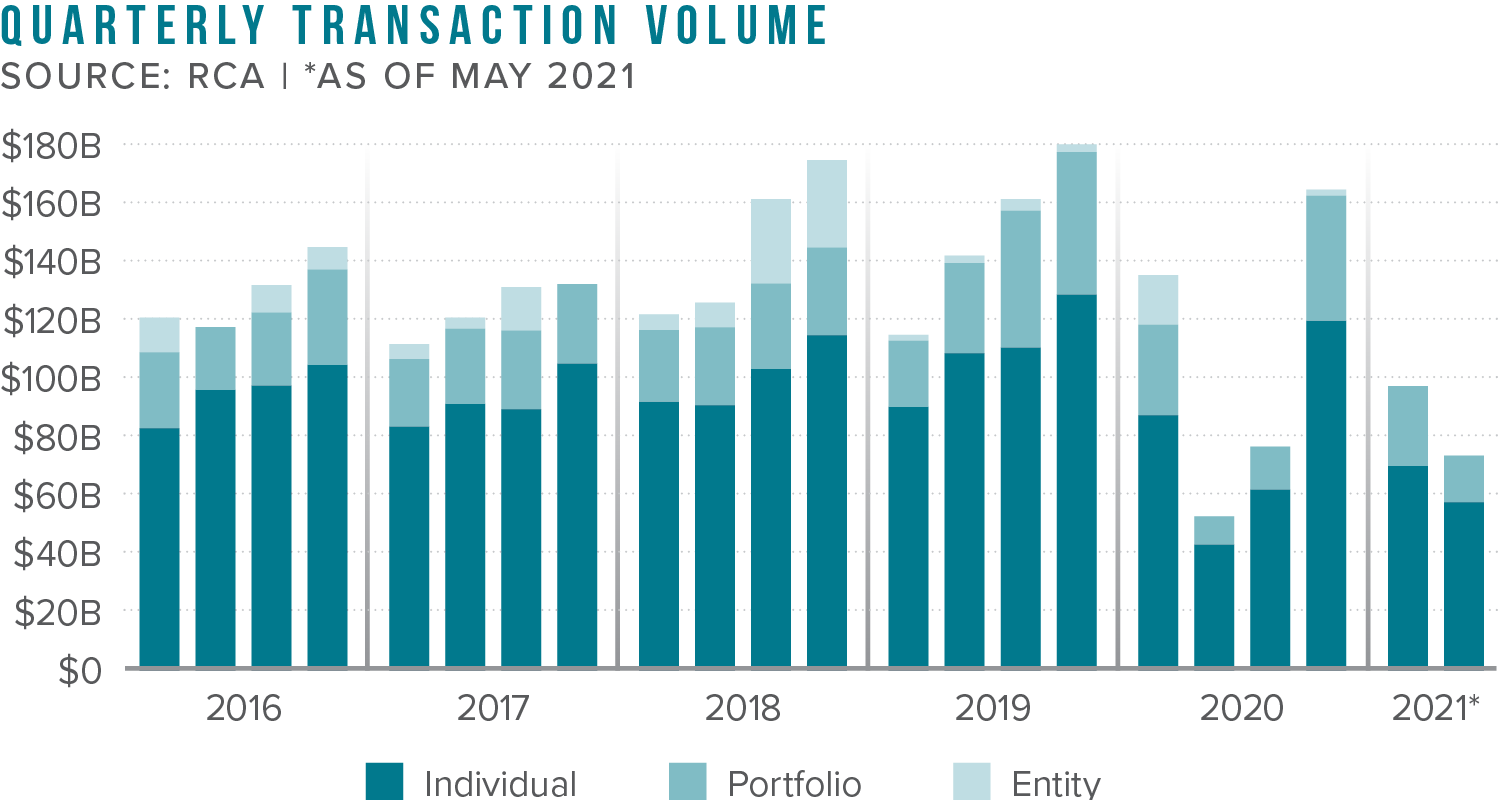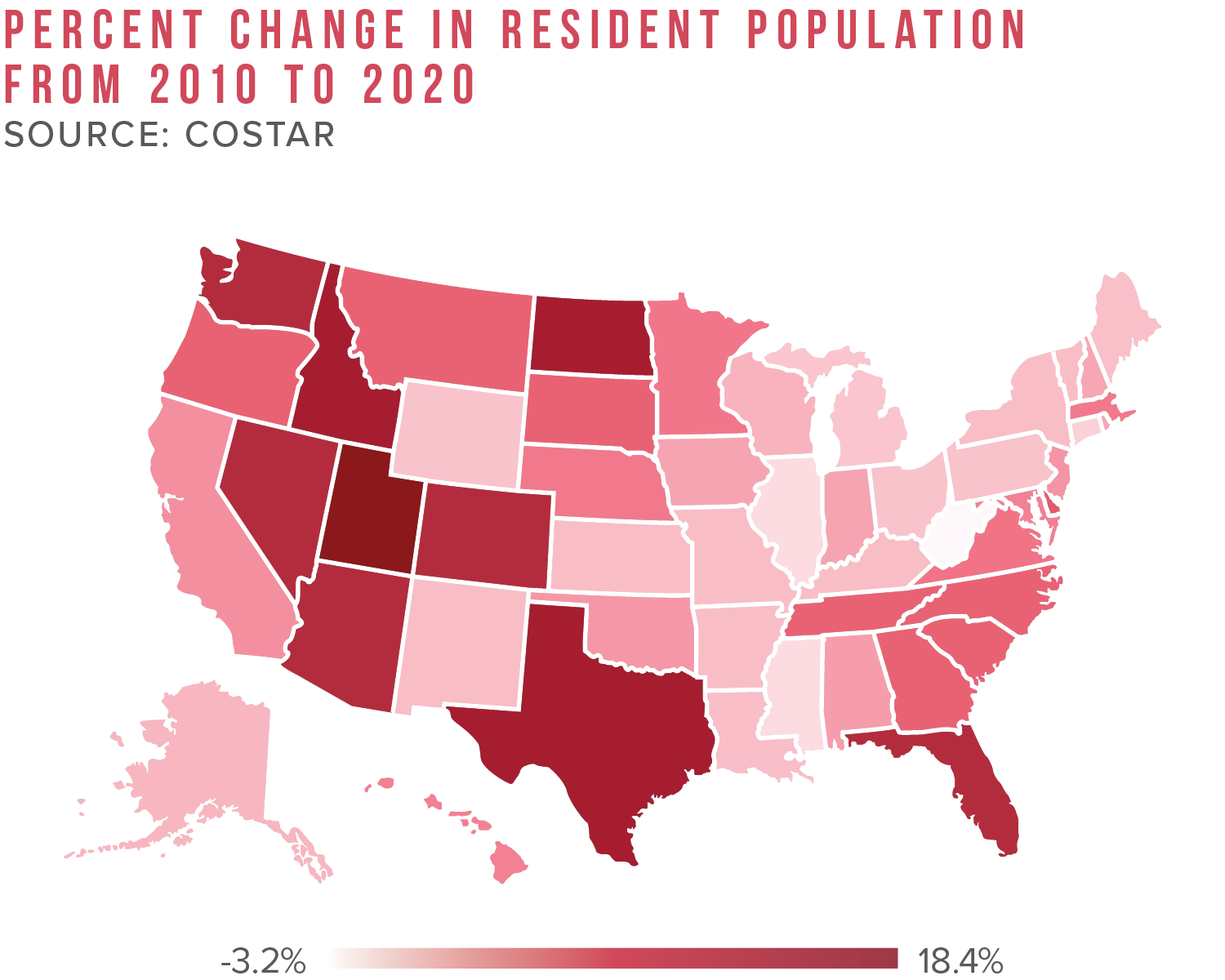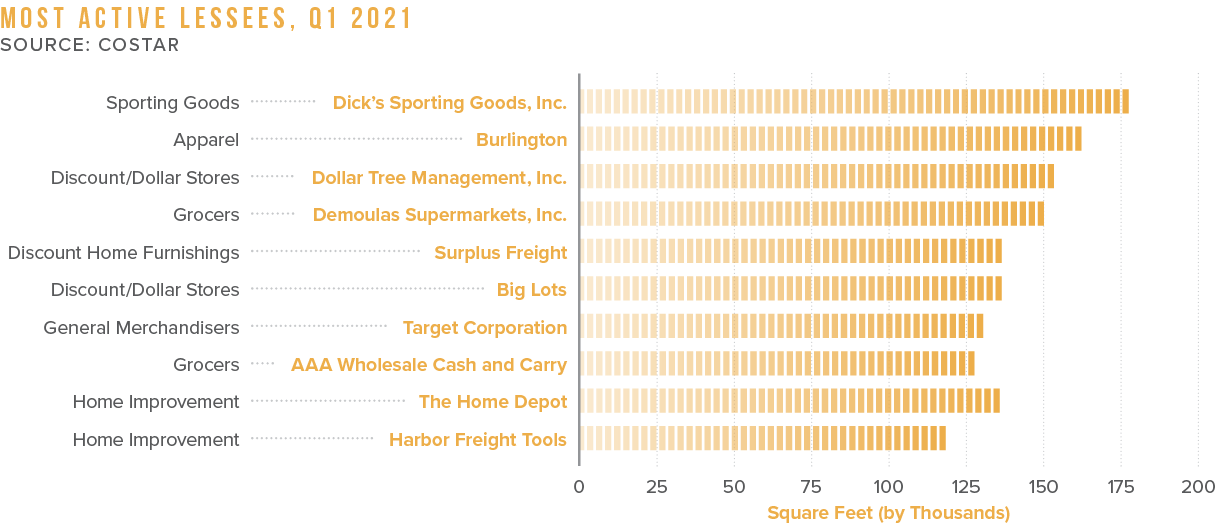
There is a transformation occurring within the commercial real estate space as consumers adjust to the “new normal.” Here we explore the trends and numerous opportunities available in the market.
What’s Next For CRE?
As the market begins to stabilize, it is anticipated that the “new normal” will bring a new meaning to experiential retail, square footage to multifamily, reconfiguring of office space, and continued performance for warehouse and distribution centers. Distressed sales marked a large percentage of the desired product, and niche product types unpronounced before COVID-19. The Federal Reserve is very likely to remain accommodative on monetary policy, keeping interest rates low throughout 2021. These factors provide a favorable backdrop for commercial investors and a continued economic recovery alike.

The Apartment Market
COVID-19 has accelerated the work from home trend, which had ultimately changed people’s apartment expectations. This has caused a move to sunbelt states and suburban migration, with renters seeking more affordability, larger spaces, and higher safety/health precautions for buildings. The pandemic has also changed how people lease apartments; online tours and processes are preferred. These processes have created a higher need for efficiency and technology adoption. As of May 2021, the year-over-year price change for U.S. apartments is 10.1%, transaction volume is $10.5B, and year-over-year transaction volume change is 119%.

The Retail Market
Although the sector faced headwinds from the pandemic-induced capacity restraints and e-commerce shifts, vacancy rates are beginning to stabilize as retailers closing stores are counterbalanced by those who are thriving. Even before the COVID-19 pandemic, the retail sector was challenged. However, corporate-backed net lease tenants see increased demand and a wide variety of grocery stores, discounters, sporting goods, and hobby stores. As of May 2021, the year-over-year price change for U.S. retail is 2.3%, transaction volume is $3.4B, and year-over-year transaction volume change is 76%.

The Industrial Market
The national demand for industrial space is sparking an unprecedented amount of construction as retailers try to keep up with the expanding e-commerce landscape. Activity surrounding preleasing is robust, and the segments needing to grow their distribution and fulfillment channels are pet care, home improvement, and necessities. With the strength of investor demand for industrial properties, prices are growing quickly. As of May 2021, the year-over-year price change for U.S. industrial is 9.5%, transaction volume is $5.3B, and year-over-year transaction volume change is 70%.

Debt and Structured Finance
Vaccines and U.S. stimulus have the global economy on track for a strong rebound in the second half of 2021. The reopening trade is expected to favor equity over bond, the value factor over the growth factor, and non-U.S. stocks. Fed officials have upgraded their projections for growth, unemployment, inflation, and interest rates over the next few years, reflecting the impact on the economy from the additional stimulus and vaccination progress. The Federal Reserve plans to keep the target range for its short-term policy rate between 0% to 0.25% until labor market conditions improve. In the short term, there is good reason to believe inflation will run significantly higher than it has over the past ten years. This could lead to lower returns on income for commercial real estate, as net operating income is somewhat sticky. Continued increases in construction costs for both materials and labor would also be a problem for developers.

For more information on the trends occurring in your asset class, please reach out to a Matthews™ specialized agent.









